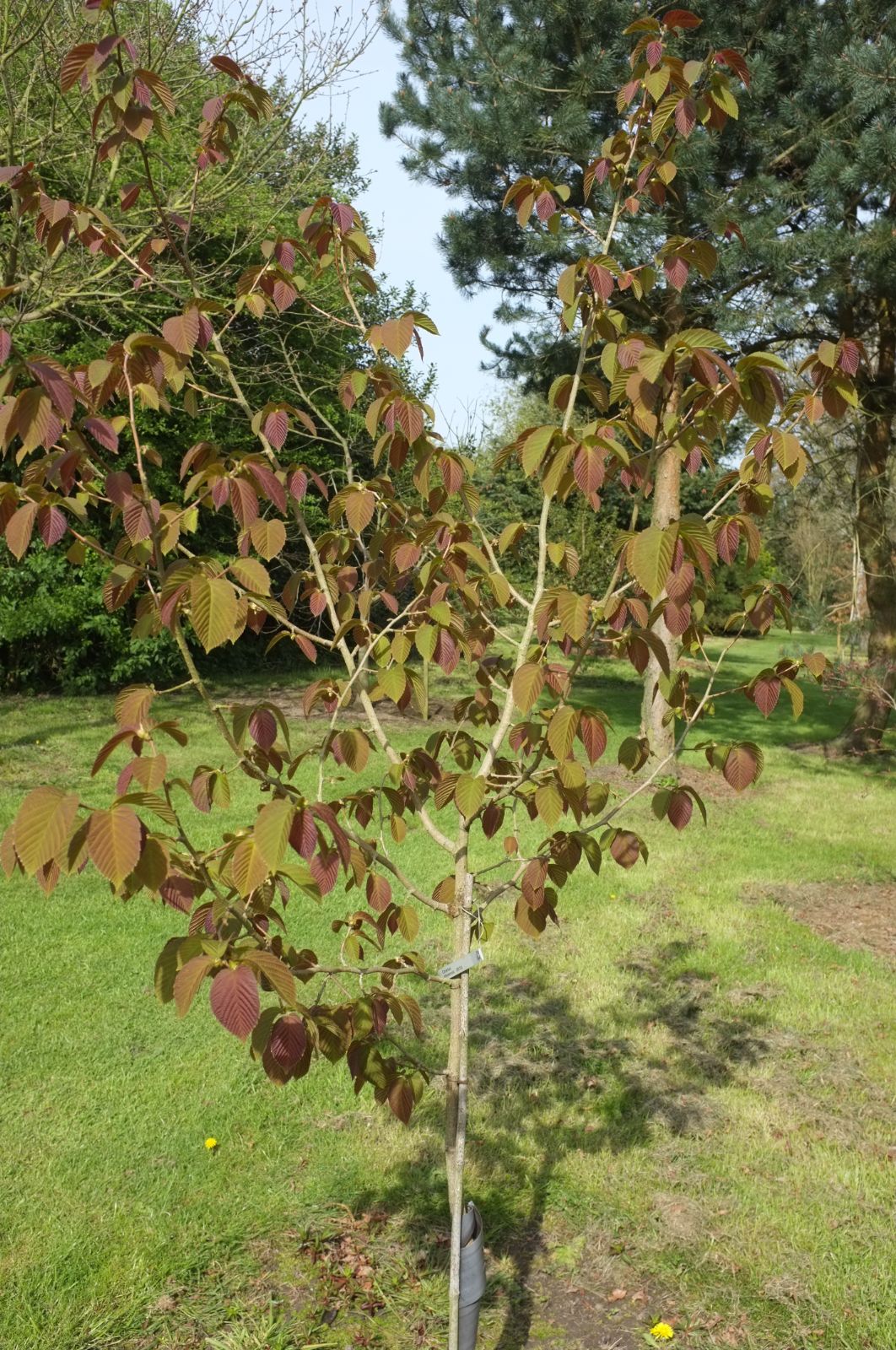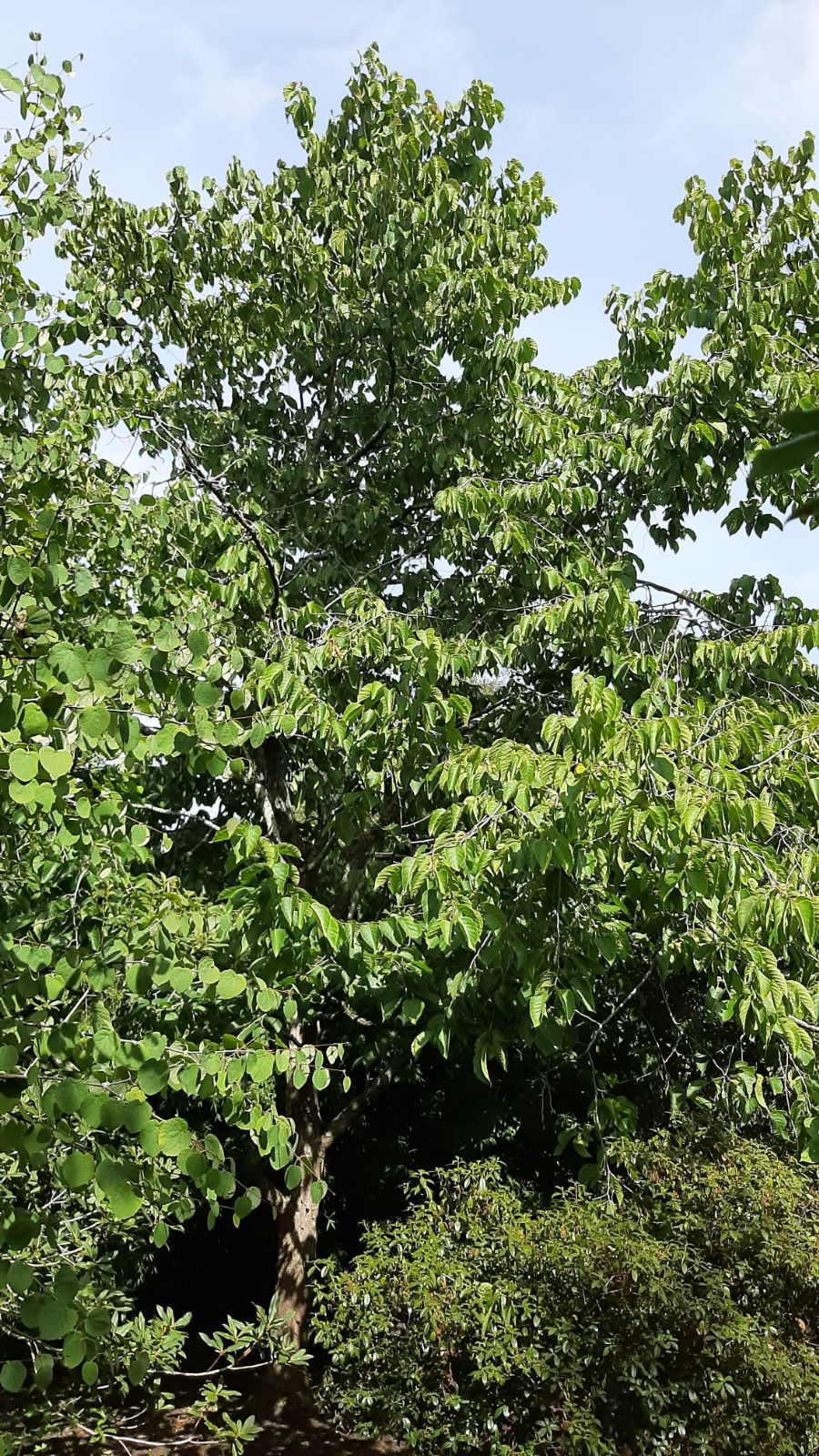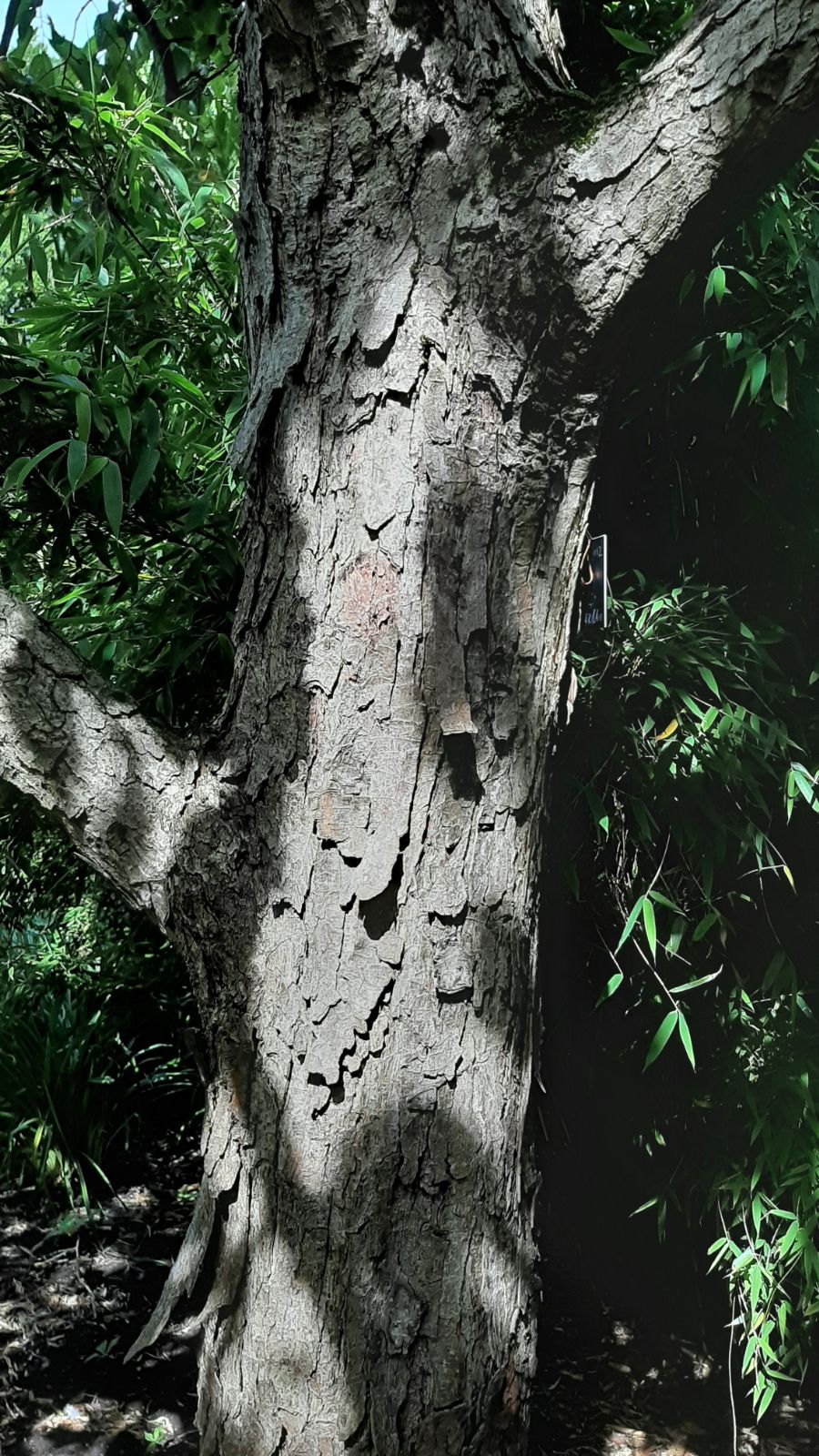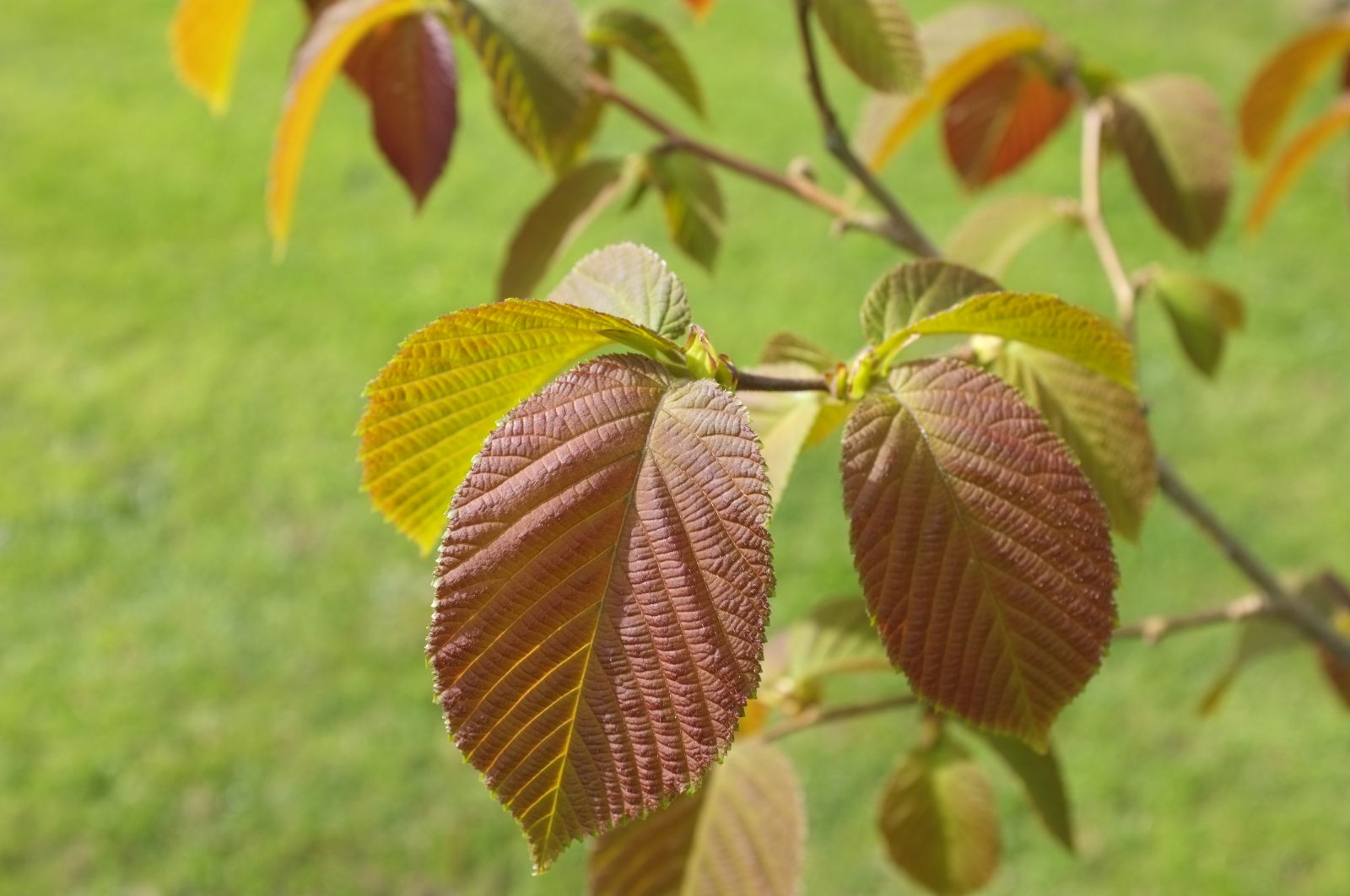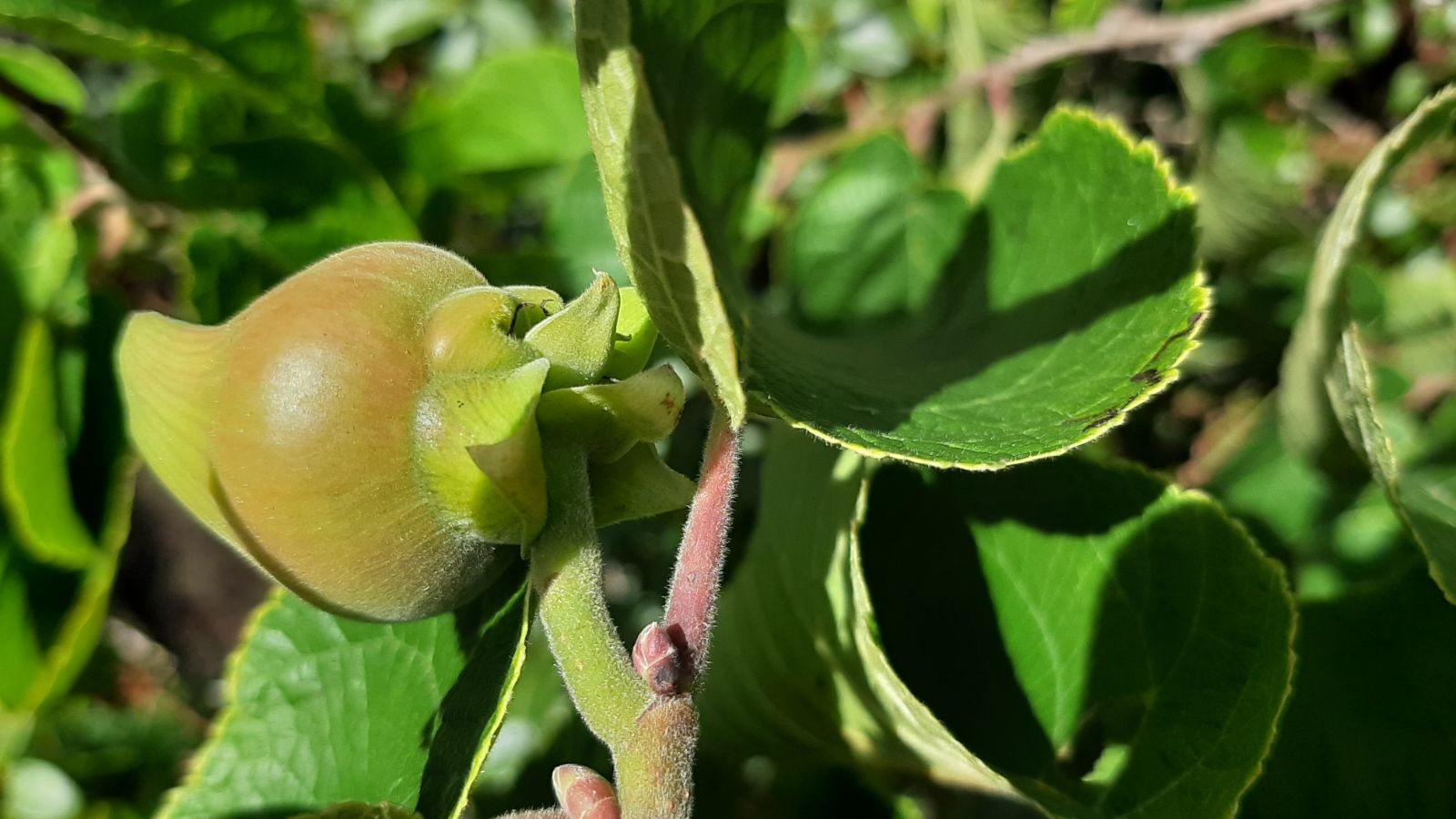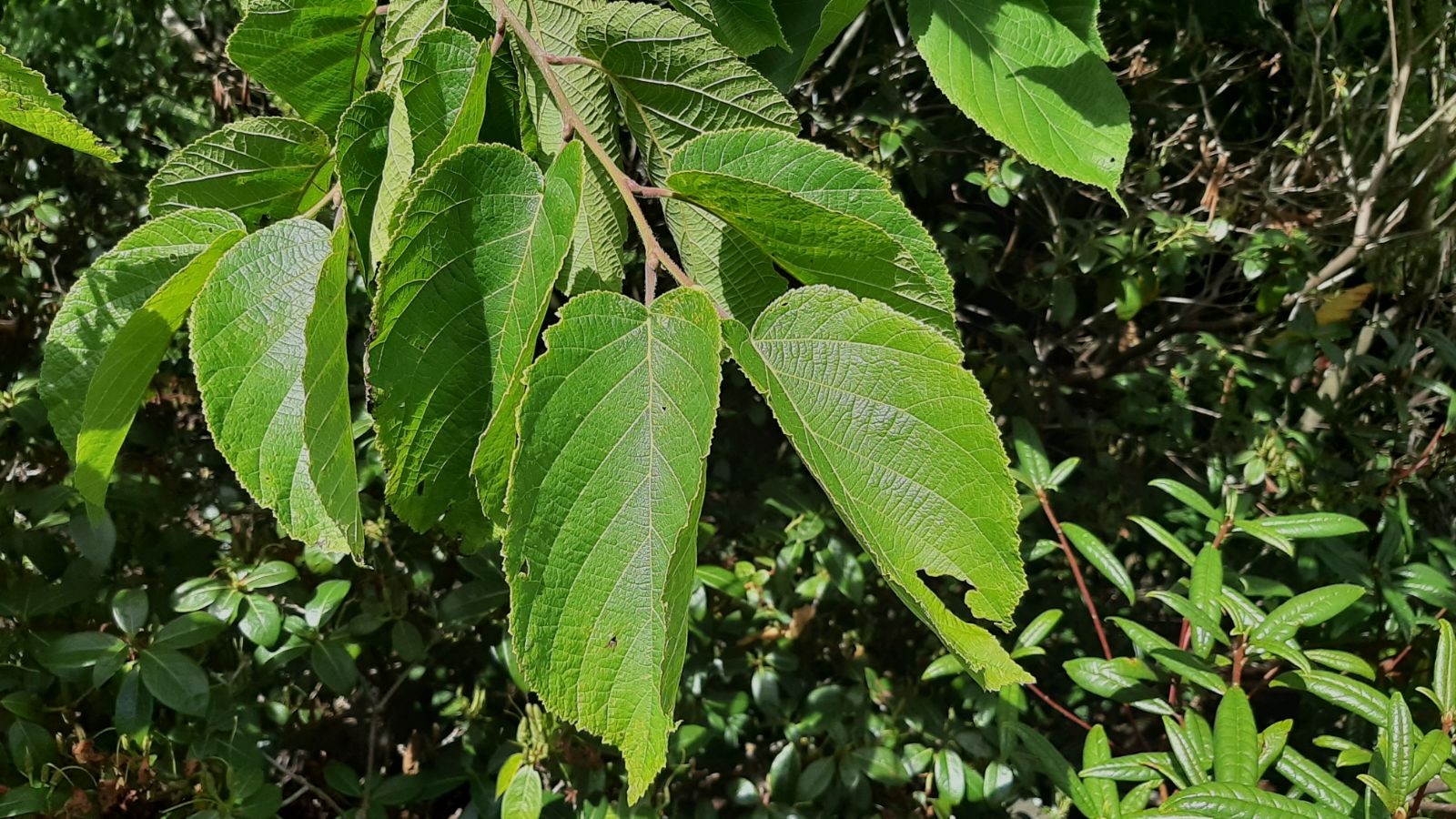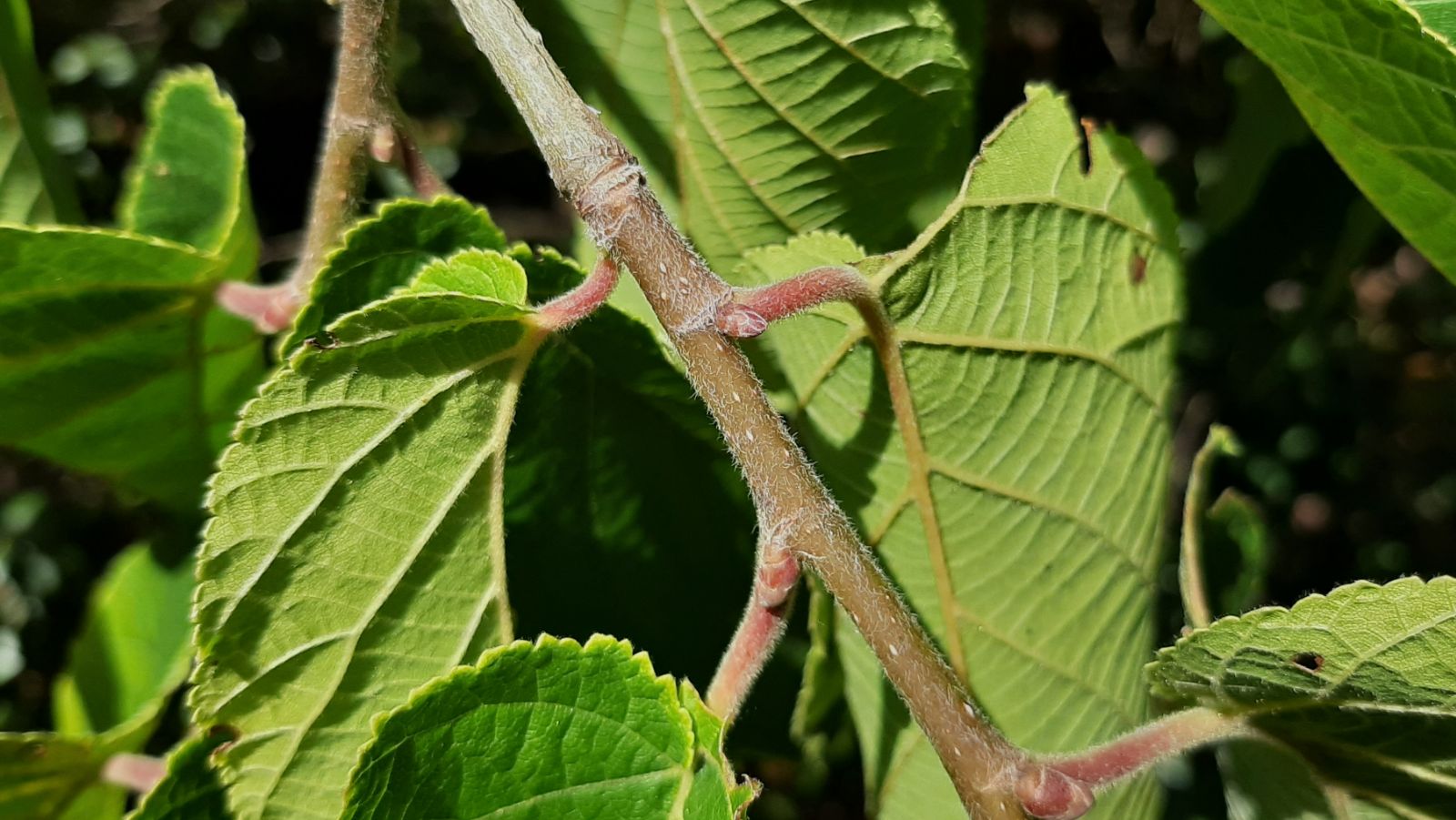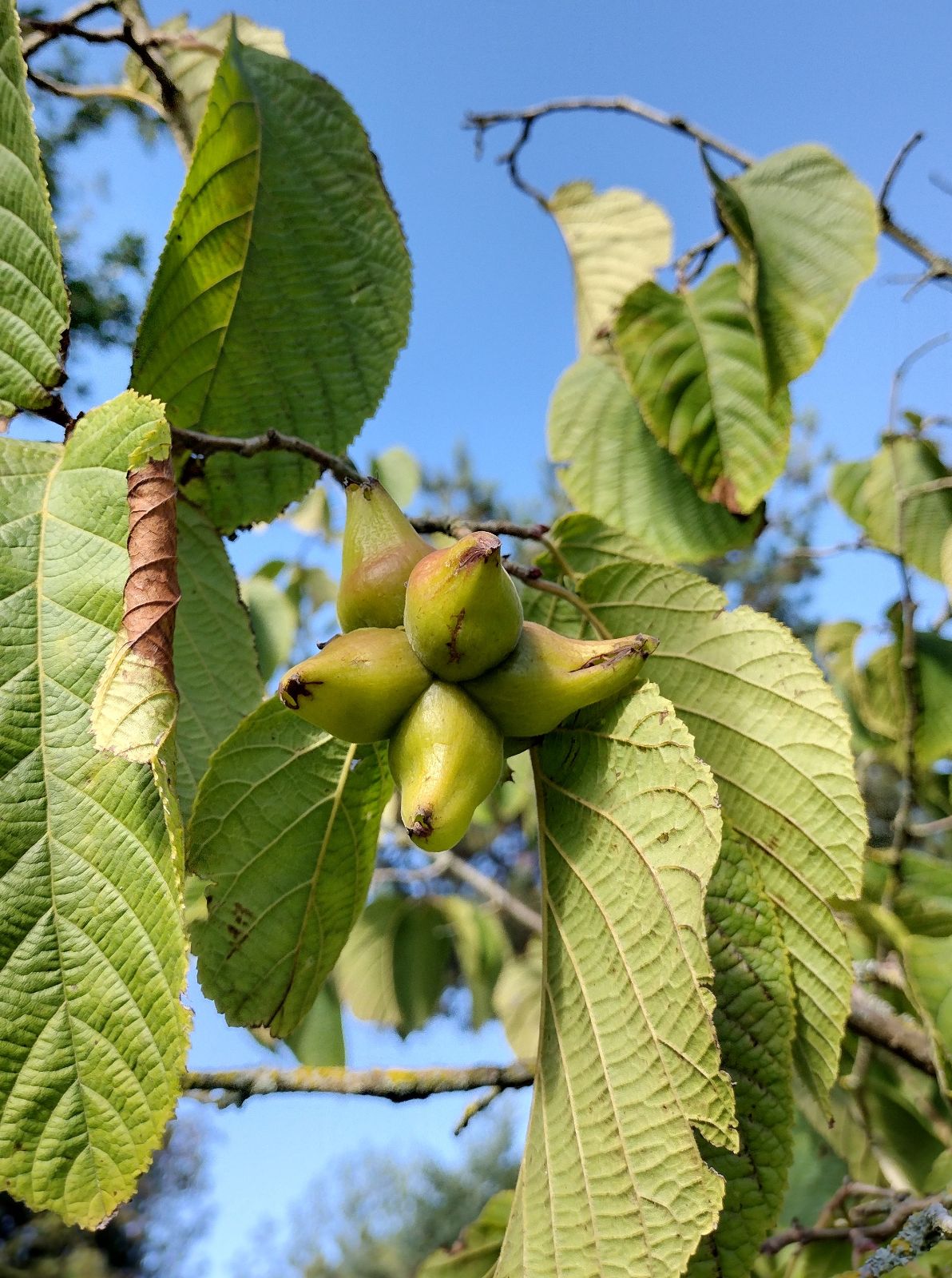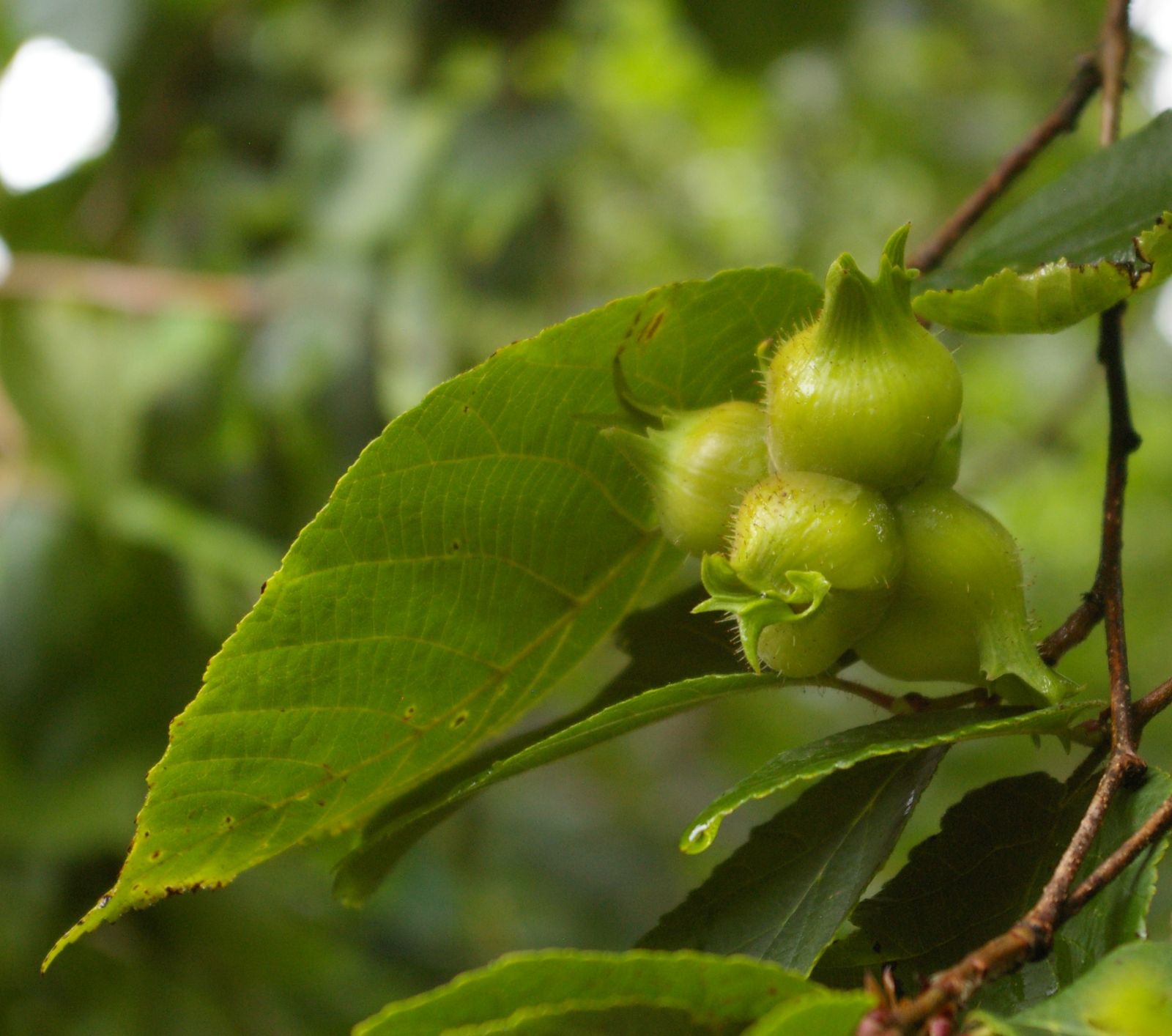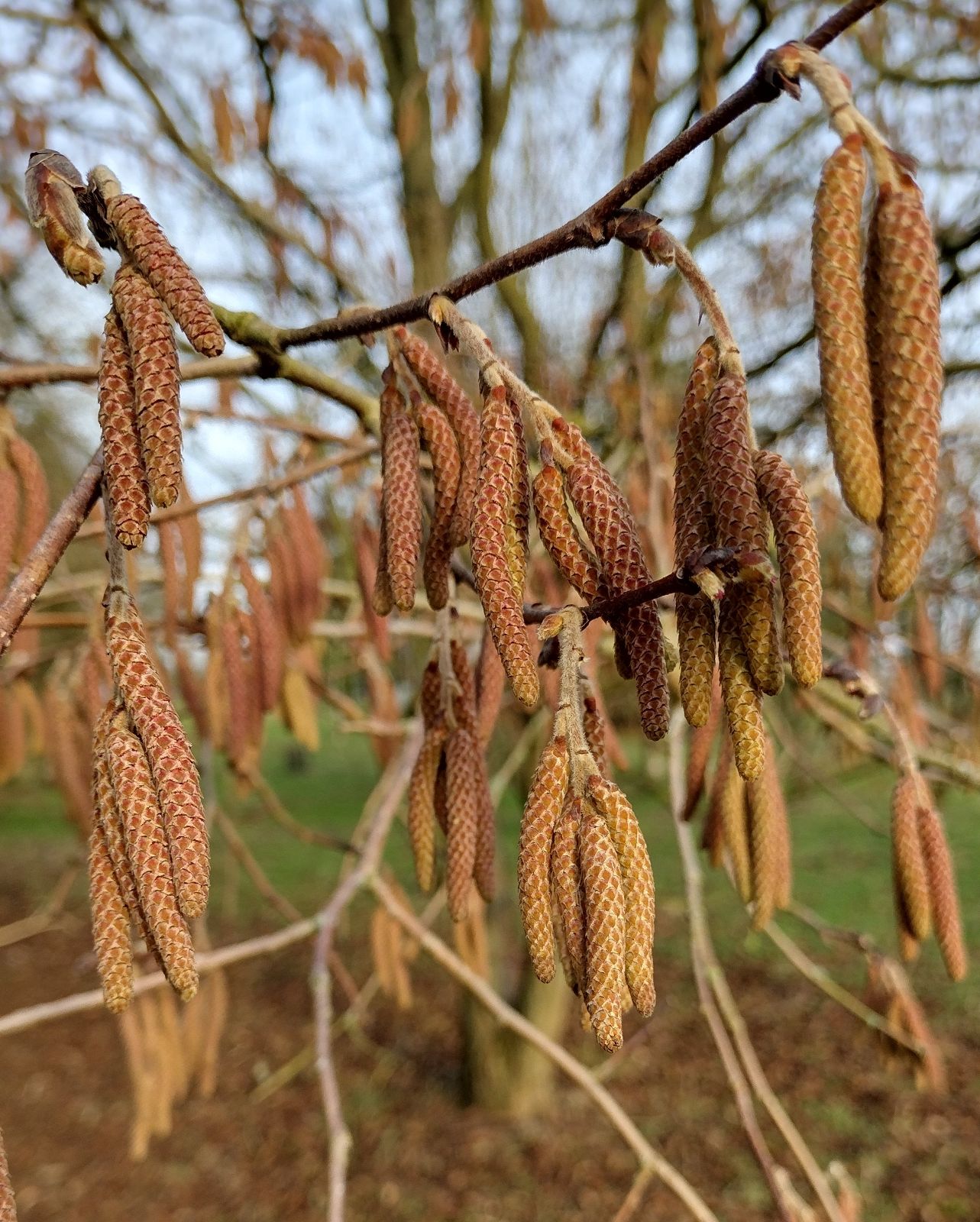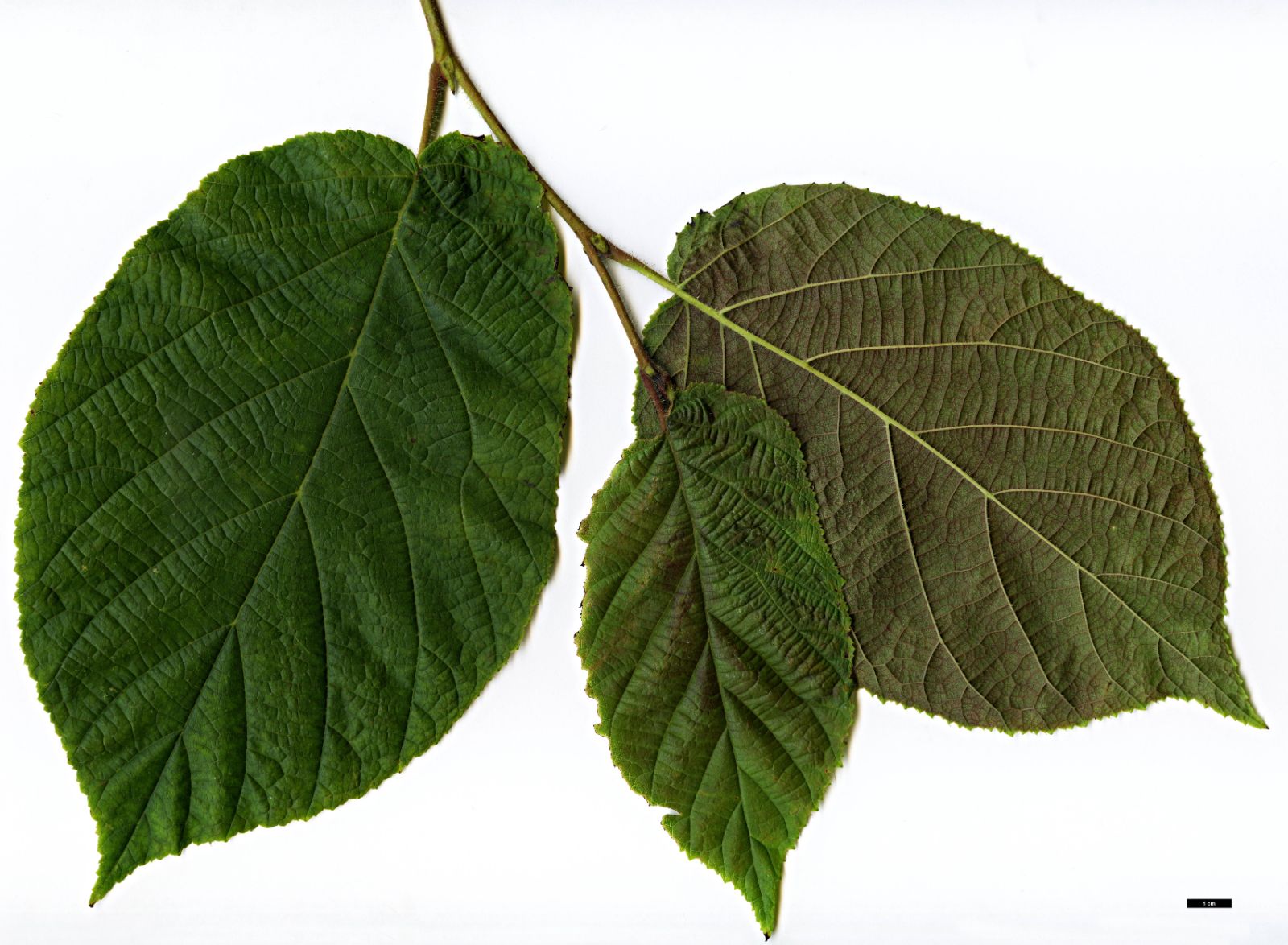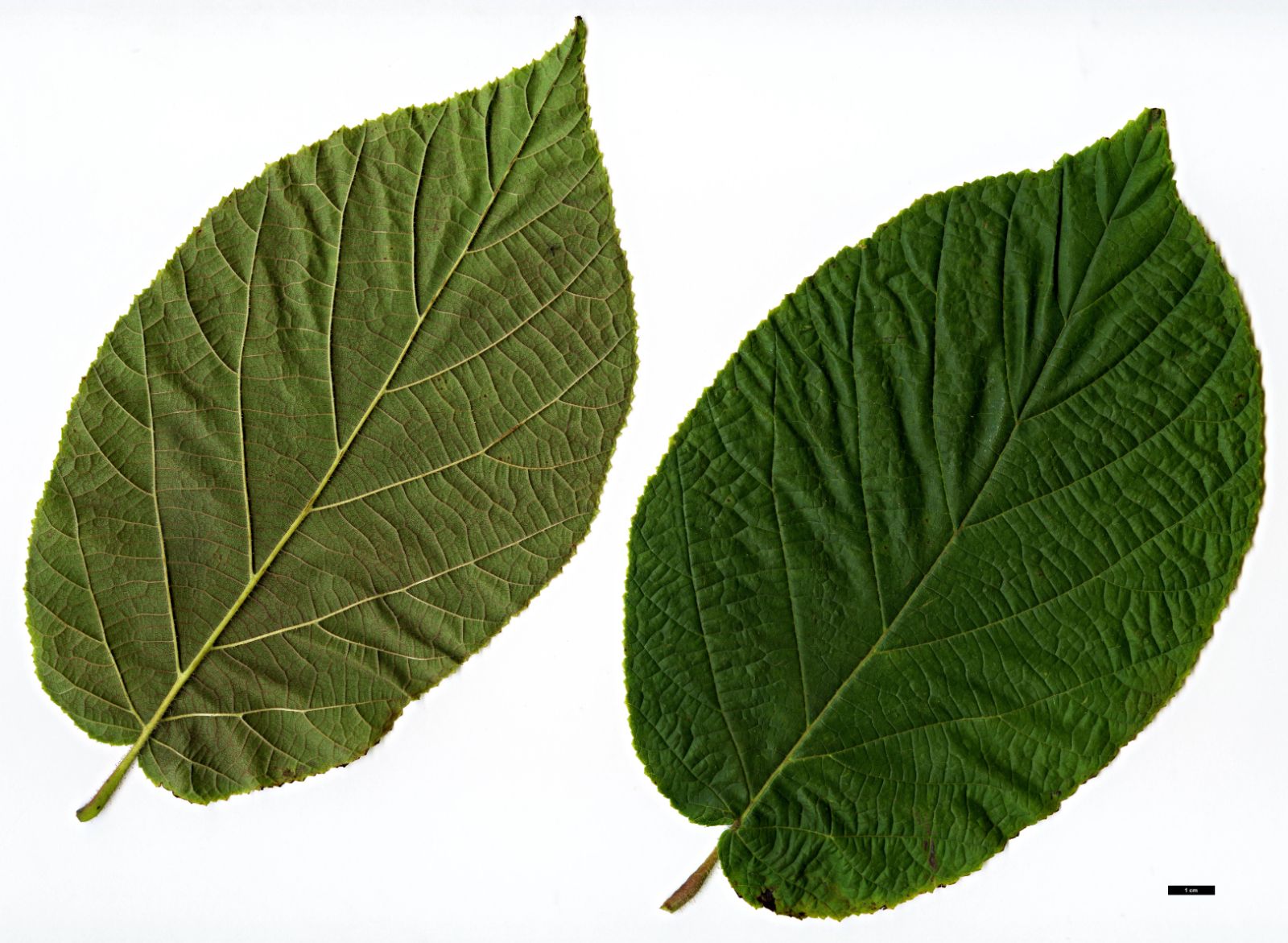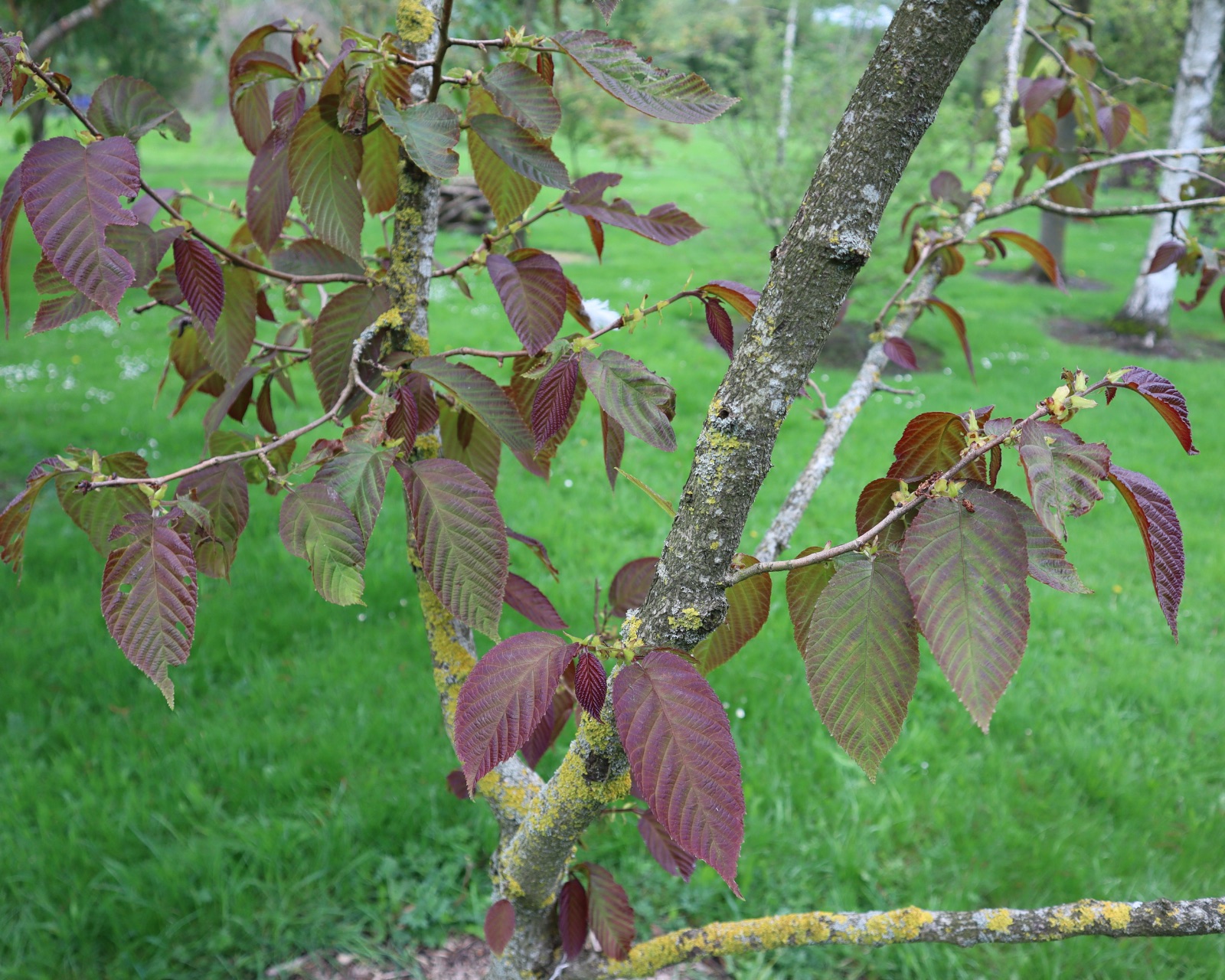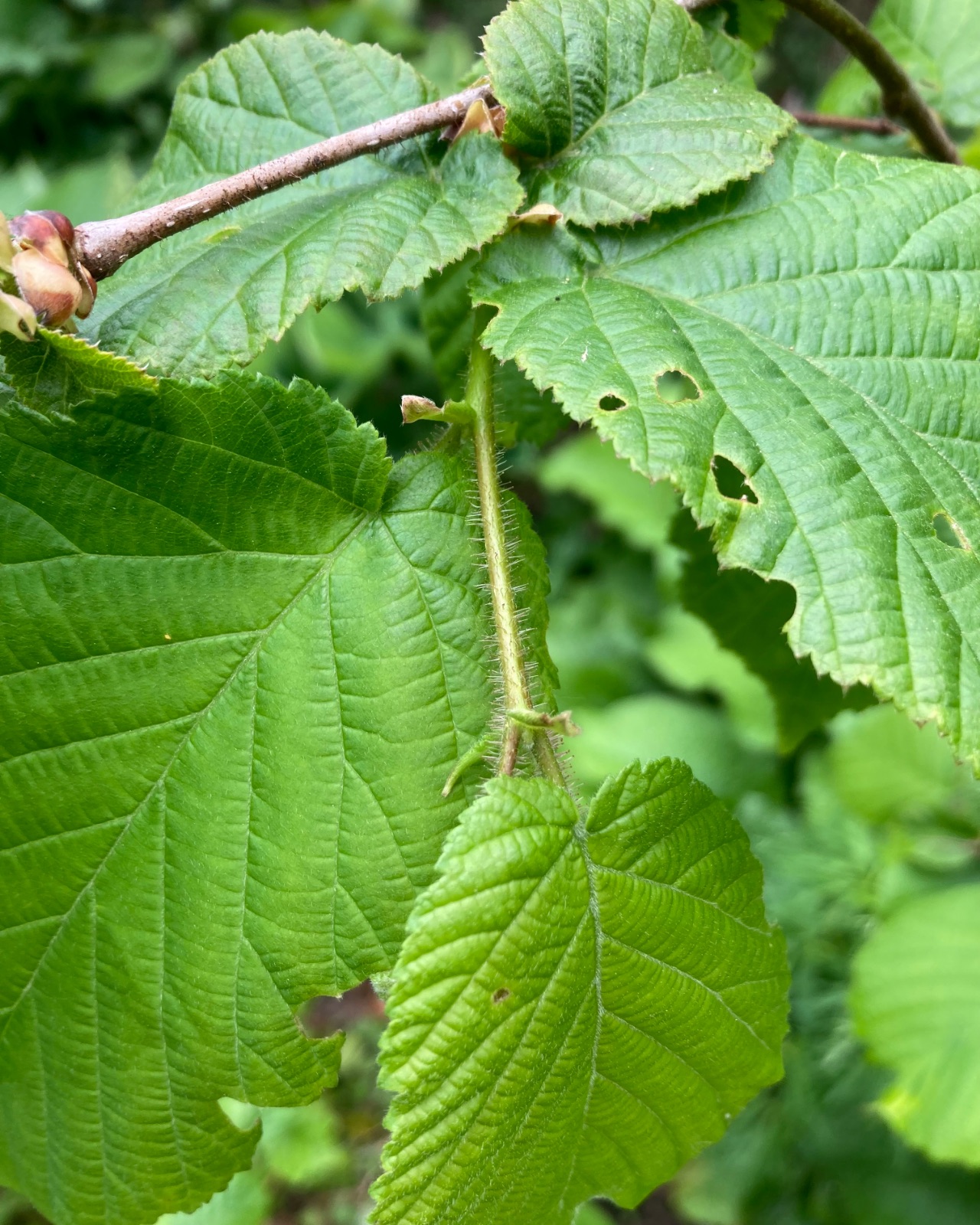Corylus chinensis
Sponsor
Kindly sponsored by
Kent Men of The Trees
Credits
Owen Johnson & Richard Moore (2023)
Recommended citation
Johnson, O. & Moore, R. (2023), 'Corylus chinensis' from the website Trees and Shrubs Online (treesandshrubsonline.
Genus
Common Names
- Chinese Hazel
- 华榛 (hua zhen)
Synonyms
- Corylus colurna var. chinensis (Franch.) Burk.
- Corylus chinensis var. macrocarpa Hu
- Corylus papyracea Hickel
Other taxa in genus
- Corylus americana
- Corylus americana × avellana
- Corylus avellana
- Corylus avellana × cornuta
- Corylus avellana × heterophylla
- Corylus avellana × maxima
- Corylus avellana × sieboldiana
- Corylus avellana × sutchuenensis
- Corylus Badgersett Hybrids
- Corylus colchica
- Corylus colurna
- Corylus × colurnoides
- Corylus cornuta
- Corylus fargesii
- Corylus ferox
- Corylus 'Grand Traverse'
- Corylus heterophylla
- Corylus jacquemontii
- Corylus maxima
- Corylus 'Purple Haze'
- Corylus 'Rosita'
- Corylus 'Ruby'
- Corylus sieboldiana
- Corylus × spinescens
- Corylus sutchuenensis
- Corylus 'Te Terra Red'
- Corylus × vilmorinii
- Corylus yunnanensis
A large tree to 40 m, often with a straight bole. Bark grey-brown, flaking in shallow scales and finally with craggy plates. Young twigs dark purplish brown, with both soft hairs and stiffer glandular hairs. Leaf ovate to obovate, long (8–18 × 6–12 cm), obliquely and not deeply cordate at the base, shortly acuminate at the tip, margin irregularly and doubly serrate but scarcely lobulate, glabrous above, with dense soft hairs under the veins and with axillary tufts, flushing reddish; petiole 10–25 mm, densely hairy and also with stiffer glandular hairs. Male catkins 4–6 together, pale reddish brown. Fruits in clusters of 2–6; nut ovoid to globuse, 10–15 mm wide, husk downy and with stiff glandular hairs, forming a smooth but longitudinally ribbed tubular sheath 2–6 cm long which is much constricted above the nut but also deeply divided into jagged, linear lobes. (Li & Skvortsov 1999; Bean 1981; Camelbeke & Aiello 2016).
Distribution China Gansu, Guizhou, Hubei, Shaanxi, SW Sichuan, Xizang, NW Yunnan.
Habitat Forests on moist mountain slopes, 1200–3500 m.
USDA Hardiness Zone 6
RHS Hardiness Rating H5
Conservation status Least concern (LC)
In its native forests Corylus chinensis is the tallest-growing member of this often shrubby genus; one tree reported by Ernest Wilson in Hubei was 40 m tall with a trunk 1.72 m broad (Sargent 1916). The species was described by Adrien Franchet in 1899 from herbarium specimens collected by Jean Marie Delavay in Yunnan in 1884; Wilson introduced it from Hubei to Veitch’s Coombe Wood Nursery in England in 1900–01 during his first Chinese expedition (Bean 1981; Moore 2021). As a tree-sized hazel it is most likely to be confused with the west Asian C. colurna (and C. jacquemontii), but these trees are generally less hairy, have a corkier, less shaggy bark, lobulate leaves which are more obviously a hazel’s in shape, and nuts with very different husks which spread into starry points. C. fargesii has similar fruit to that of C. chinensis, but its husks form longer socks whose tips are not deeply divided; in the wild this is a smaller tree, with a peeling, birch-like bark in youth.
Corylus chinensis is sometimes considered Endangered (Oldfield, Lusty & MacKinven 1998; Li & Skvortsov 1999); deforestation is a problem across the scattered areas where it is found, but since these areas cover a wide geographical zone it has more recently been assessed as a plant of Least Concern (Shaw et al. 2014). Because it grows naturally on the steep flanks of high mountains, it should also have little difficulty in migrating to higher elevations in response to Climate Change (He et al. 2022).
The oldest plants in the UK and Ireland presumably derive from Wilson’s original seed (W 842). The surviving example at the Royal Botanic Garden Edinburgh was accessioned in 1902 but is only six metres tall and is grafted at the base, probably on Corylus colurna, so it must be a re-propagation; another specimen here, 12 m tall in 2004, was more likely to have represented the first generation of seedlings but has since been lost (Moore 2021; Tree Register 2023).
It is certainly true that Corylus chinensis has not, yet, been planted in the west in conditions kind enough – or from a provenance adaptable enough – for it to begin to rival the giant trees reported from the wild. Plants from the mountains of southern China are used to ample rainfall through the growing season, but in this case C. chinensis is able to tolerate the poor gravelly soils and often dry summers of the Royal Botanic Gardens, Kew (Moore 2021); an old tree in the hazel collection here of unrecorded provenance, 13 m tall in 2022, was retrenching in 1991 but now looks healthier. In China the species will also be used to more summer heat than it receives in Edinburgh, and the tree there only bears fruit during a good summer, for example in 2022. One old example at the National Botanic Garden at Glasnevin in Ireland was 18 m tall in 2012, but the Corylus collection here is in need of further study and many of its specimens are clearly mis-labelled. Another mature representative from Dublin, in the Trinity College Botanic Garden, was only 7 m tall in 2011 (Tree Register 2023). A vigorous tree planted by the late Maurice Mason in one of his vast Norfolk gardens had a trunk 65 cm thick in 2019, but this forks heavily from the base, like some reported from the wild (Moore 2021; Tree Register 2008). In the cool, Atlantic climate of South Ayrshire, Scotland, there are two good single-stemmed specimens in the orchard at Blairquhan Castle, the larger with a dbh of 48 cm and a recorded planting date of 1940. Another possible example 14 m tall at Glansevern Hall in Wales was observed by one of us (OJ) in 2009, when its bark was remarkable, flaking in scales of ash-grey and purplish brown like that of a Davidia (Tree Register 2023).
One of Wilson’s original collections was grown at the Arnold Arboretum in Massachusetts from 1909 until it was removed in 1937, perhaps because of damage from the harsh winters of the time (Moore 2021). However, the species is just hardy enough to be grown today at the Arnold (Friedman 2022), which lies in North American Hardiness Zone 6. Further evidence for the species’ toughness can be seen in the successful cultivation of wild-collected material since 2009 at the Linnaeus Garden at Uppsala in central Sweden (Royal Botanic Garden Edinburgh 2023).
There have been several more recent introductions to the west. SICH 1747 (originally mis-identified as the bush Corylus heterophylla) had already reached 16 m by 2021 in a very shady spot in the Valley Gardens, Windsor, Surrey (Tree Register 2023); plants from this seed consistently seem to make beautiful and promising spire-shaped trees in England. A slightly earlier collection, B&L 12558, has also grown at the Yorkshire Arboretum since 1988 (Yorkshire Arboretum 2023). Some good young European examples of C. chinensis are at the Arboretum de l’Ecole du Breuil in Paris and the Villa Taranto in northern Italy (Project Dryades 2023). The Corylus collection at Oregon State University includes a particularly shapely young specimen (Oregon State University 2023), and the species also shows promise in the much warmer (but humid) summers of the J.C. Raulston Arboretum in North Carolina (J.C. Raulston Arboretum 2023).
Corylus chinensis has attracted some interest for its potential in breeding new fruiting hazels; its performance in New Jersey suggests it can show a good degree of immunity to Eastern Filbert Blight, where it also resists damage by Japanese Beetle, Popillia japonica. Like C. colurna it does not produce many sprouts from the base, making it useful as a non-suckering rootstock for grafted commercial hazel bushes; it tends to develop a good fibrous root system more quickly from seed than C. colurna, the species which is currently used in this role (Molnar 2011). C. chinensis hybridises easily with C. avellana to make a vigorous plant with superior nuts (C. × vilmorinii); at Oregon State University it has also been successfully but experimentally crossed with C. americana, C. colurna and C. cornuta subsp. californica (Erdogan & Mehlenbacher 2000).
Within larger gardens, this is clearly a species which deserves to share at least some of the recent popularity of C. colurna; the sunrise colours of its expanding leaves are a special delight, and the mature bark can be fascinatingly rugged and shaggy, almost like some hickories’. In the UK, C. chinensis was offered in 2023 by Bluebell Nursery and Pan-Global Plants, where Nick Macer has found that it can be most successfully grafted onto C. fargesii (N. Macer pers. comm. to RM.)

